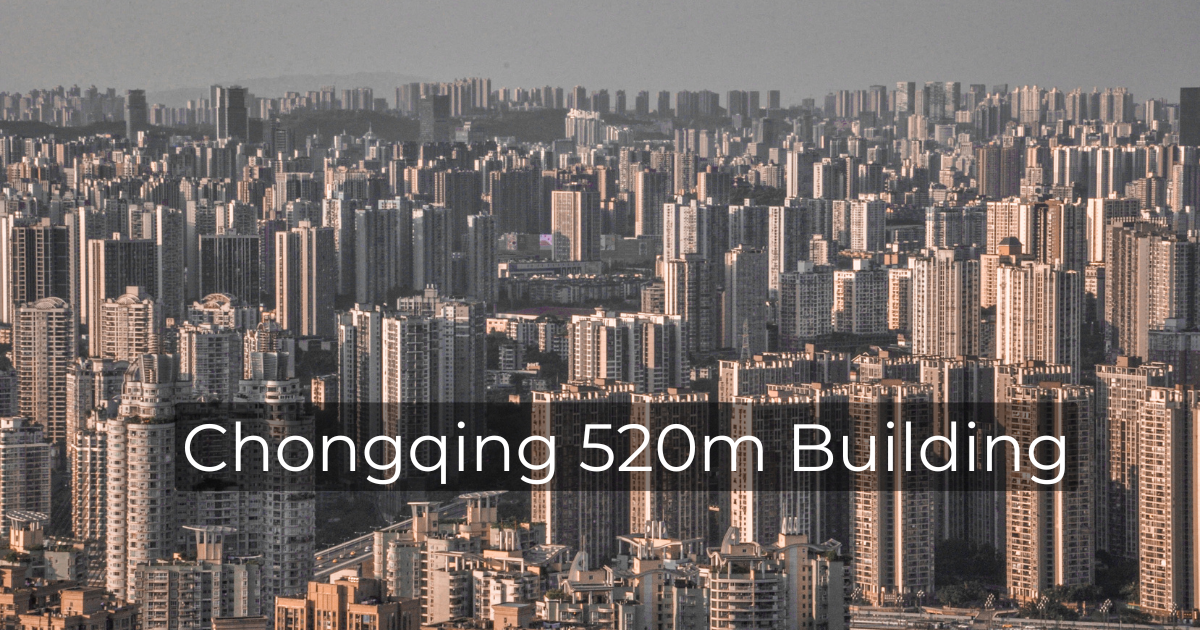The Chongqing 520m Building stands as a beacon of Chongqing’s rapid urban development and ambition. Rising prominently in the city’s skyline, this skyscraper symbolizes the fusion of cutting-edge architecture with local cultural elements, reflecting both modernity and tradition. In addition, it represents the city’s drive toward global recognition.
Historical Background
Early Concepts and Planning
The vision for the Chongqing 520m Building emerged from a desire to elevate the city’s global profile. Consequently, planners aimed to create a structure that was not only tall but also emblematic of Chongqing’s aspirations. In the early stages, a collaborative effort among architects, engineers, and city officials was essential. This teamwork ensured that the design would be both striking and functional, seamlessly integrating with the city’s future urban landscape.
Approval and Development Phases
Securing approval for such an ambitious project involved navigating complex regulatory frameworks and addressing environmental concerns. Furthermore, the development process required meticulous coordination among various teams to manage budget constraints and stay on schedule. Despite facing challenges such as environmental impact and safety considerations, the project proceeded with careful planning and execution.
Architectural Design
Vision and Design Philosophy
The design of the Chongqing 520m Building embodies a modern, forward-thinking philosophy. To achieve this, architects envisioned a multifunctional space that would serve diverse purposes while showcasing contemporary design principles. Key elements include the strategic use of natural light and expansive open areas, which enhance both aesthetic appeal and functionality.
Structural Innovations
Building a structure of this height necessitates advanced engineering solutions. Specifically, the skyscraper features a reinforced concrete core that ensures stability and supports its considerable weight. In addition, engineers implemented a mass damper system to mitigate movement caused by wind and seismic activity, thereby ensuring the building’s safety and occupant comfort.
Construction Process
Challenges in Building a 520m Structure
Constructing such a towering structure presents unique challenges, particularly in a seismically active region like Chongqing. To address these challenges, innovative engineering and construction techniques were employed, including the use of high-strength materials and state-of-the-art construction methods. Effective coordination among a large workforce and numerous subcontractors was crucial to overcoming these obstacles.
Timeline of Construction
The construction of the Chongqing 520m Building spanned several years, with significant milestones including foundation laying, steel framework erection, and glass facade installation. Although there were delays due to weather conditions, the project was completed on schedule, culminating in the building’s official opening to the public.
Environmental Impact and Sustainability
Green Building Practices
Sustainability was a core focus in the design and construction of the Chongqing 520m Building. For example, energy-efficient glass and a modern HVAC system contribute to reduced energy consumption and a lower carbon footprint. Moreover, the building incorporates green spaces and vegetation to enhance air quality and minimize environmental impact.
Environmental Impact Assessment
Prior to construction, a thorough environmental impact assessment was conducted. This evaluation considered factors such as air quality, noise pollution, and the impact on local wildlife. Consequently, the design sought to mitigate potential negative effects and integrate green elements that benefit the surrounding environment.
Architectural Features
Exterior Design
The exterior of the Chongqing 520m Building is characterized by a sleek, modern aesthetic. Specifically, high-performance glass and steel create a reflective facade that changes with the light, offering a dynamic appearance throughout the day. In addition, the design maximizes natural light penetration, enhancing the building’s visual appeal and interior environment.
Interior Layout and Design
Inside, the building features a blend of open and private spaces designed for versatility. Furthermore, the interior layout is both functional and adaptable, with materials like wood and stone providing warmth and elegance. To enhance user experience, smart technology is integrated throughout, making the building not just a place to work or live, but an experience in itself.
Height and Structural Significance
6.1 The Importance of the 520m Height
The choice of a 520m height for the building was deliberate, aiming to make a bold statement about Chongqing’s growth and ambitions. In this context, the building serves multiple functions, including office spaces, residential areas, and entertainment venues. As a result, it sets a new standard for architectural projects in the city.
Structural Integrity at 520m
Maintaining structural integrity at this height involves advanced engineering techniques. For instance, the reinforced core and mass damper system are crucial in ensuring the building’s stability and safety. Thus, the building can withstand natural forces and provide a secure environment for its occupants.
Comparison with Other Skyscrapers
Chongqing 520m Building vs. International Skyscrapers
On the global stage, the Chongqing 520m Building stands out for its blend of height and innovative design. Although it may not be the tallest skyscraper worldwide, its architectural quality and the challenges it has overcome place it among the notable skyscrapers of the world. Consequently, the building’s design and engineering achievements are commendable at this scale.
Chongqing 520m Building vs. Chinese Skyscrapers
Within China, the Chongqing 520m Building adds to the country’s impressive collection of skyscrapers. While cities like Shanghai and Shenzhen have taller structures, this building is significant for its integration into Chongqing’s urban fabric. As a result, its distinctive design and engineering achievements make it a key landmark in the city.
Economic and Social Impact
Contribution to Chongqing’s Economy
The Chongqing 520m Building has significantly impacted the local economy by creating thousands of jobs during construction and attracting businesses and tourists. In addition, it has become a focal point in the city’s business district, contributing to economic growth and offering a range of amenities and services.
Social Impact on the Community
Beyond its economic benefits, the building has become a symbol of pride and progress for the Chongqing community. Furthermore, it serves as a vibrant gathering place, offering public spaces, restaurants, and entertainment venues that enhance the urban experience and foster a sense of community.
Future Prospects
Maintenance and Upkeep
Maintaining a building of this magnitude involves ongoing efforts, including regular inspections, repairs, and system updates. Consequently, a comprehensive maintenance plan ensures the building remains safe and operational, with technology systems continually reviewed and upgraded.
Potential for Expansion or New Developments
The success of the Chongqing 520m Building has spurred interest in further developments. For example, future projects may include additional residential or commercial spaces and public amenities. Moreover, the building itself may also undergo enhancements to keep it at the cutting edge of architectural innovation.
Conclusion
The Chongqing 520m Building stands as a testament to the city’s ambition and growth. Not only does it redefine Chongqing’s skyline, but it also has a profound impact on the community and economy. As Chongqing continues to evolve, this iconic structure will remain a key part of its identity, symbolizing the city’s drive toward progress and innovation.










